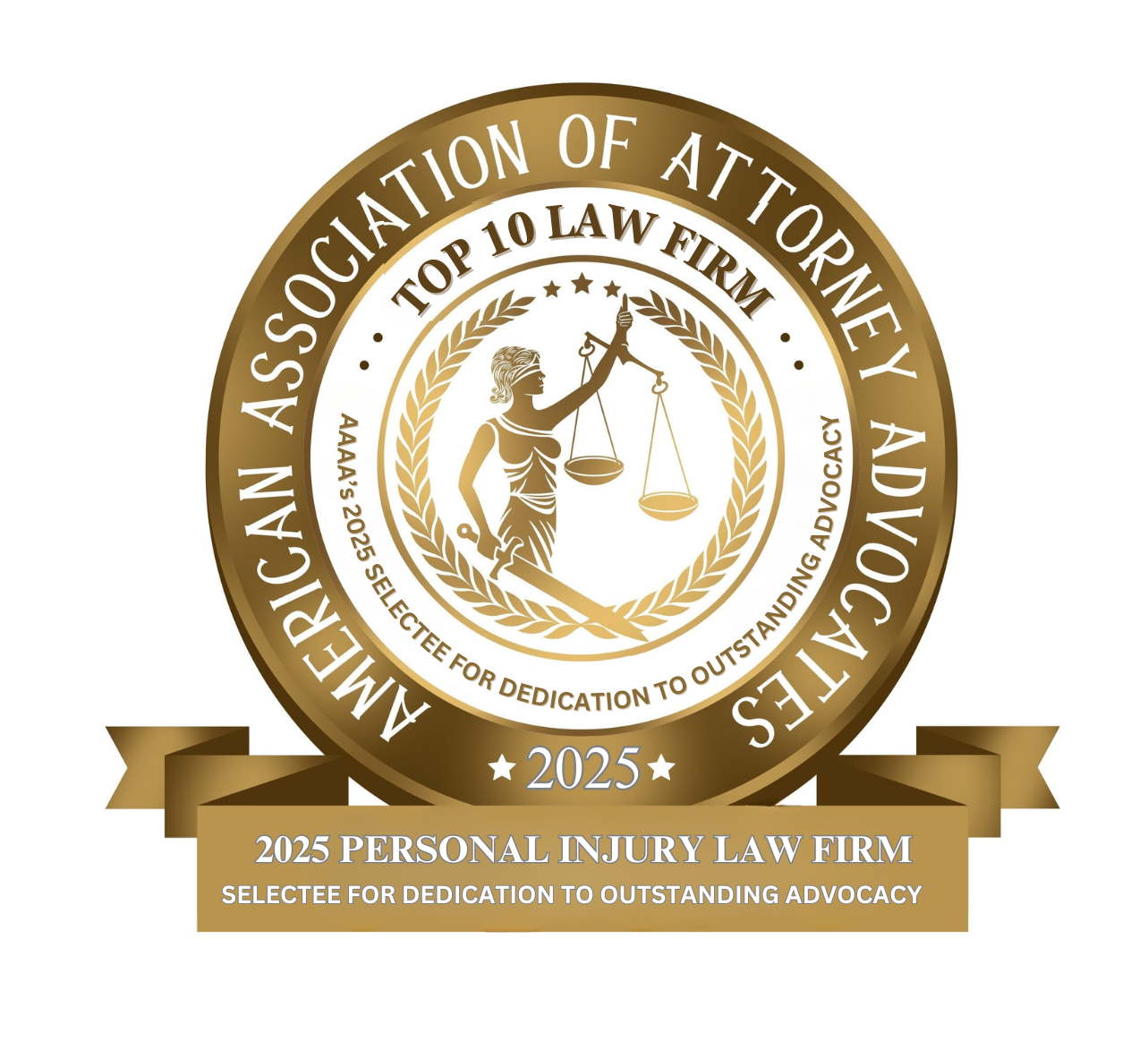Illinois Chemical Burn Injury Lawyers
Attorneys for Workers Burned by Hazardous Chemicals

Chemical burns are one of the most serious and frequently underrecognized hazards on construction sites, in warehouses, and in many other workplaces. Unlike thermal burns from heat or fire, chemical burns result from corrosive, irritant, or reactive substances contacting the skin, eyes, or internal tissues. They can cause deep tissue damage, permanent scarring, blindness, respiratory injury, and long-term disability. Because chemical exposures are often avoidable through safer work practices, proper PPE, and sensible employer controls, injured workers and their families deserve a careful investigation into how the exposure happened and whether responsible parties failed to protect them.
At John J. Malm & Associates, our Illinois warehouse injury attorneys are known for taking on the toughest injury cases and winning. With over 90 years of combined experience, our attorneys have built a reputation for meticulous investigation, aggressive advocacy, and unwavering commitment to our clients and their families. We understand that a serious injury can upend every aspect of your life, and we pride ourselves on delivering the personal attention, skill, and results that injured individuals across Illinois deserve. When you place your trust in our firm, you gain a dedicated team that will stand with you at every step, fighting for the justice and full compensation you are entitled to.
“Chemical burns in construction are uniquely devastating because even a single splash can change a worker’s life,” says Naperville work injury attorney, John J. Malm. “Too often we find that exposures happened because employers cut corners on training, PPE, or emergency equipment. When that occurs, injured workers deserve accountability and full compensation for the lifelong consequences.”
How Chemical Burns Happen on Work Sites
Construction work routinely involves acids, alkalis, solvents, cleaning agents, cement, adhesives, paints, welding fluxes, battery acids, and many other chemicals that can injure skin and eyes. Additionally, warehouse workers often deal with dangerous chemicals. Common scenarios include:
- Splash exposures during handling or transfer of liquids (e.g., pouring acids or caustic cleaners).
- Contact with wet cement or mortar, which contains alkaline compounds that can cause severe skin burns after prolonged contact.
- Exposure to cleaning chemicals and detergents used on equipment and tools.
- Accidental spills from containers that are not properly labeled, stored, or capped.
- Improper mixing of chemicals (for example, combining cleaning agents that react violently).
- Inadequate PPE: missing gloves, face shields, or eye protection, or using gloves that are not resistant to the specific chemical.
Even brief contact with some agents can cause significant injury (for example, concentrated acids or strong alkalis), while low-concentration exposures may cause delayed injury that is overlooked initially. Because symptoms may not appear immediately, workers and supervisors must treat any significant exposure seriously and follow emergency decontamination procedures.
Who is Most at Risk of a Chemical Burn?
Certain tasks and trades face higher exposure risk:
- Concrete finishers, masons, and anyone working with wet cement or mortar (alkaline burns).
- Painters and coatings applicators (exposure to solvents and acidic strippers).
- Demolition crews (old residues, hazardous materials mishandling).
- Cleaners, janitorial staff, and maintenance workers who handle commercial cleaning agents and disinfectants.
- Battery technicians and mechanics (sulfuric acid).
- Workers involved in chemical manufacturing, transport, or storage on construction-adjacent projects.
Surveillance data and epidemiologic reviews show that while chemical burns are a smaller subset of occupational burns overall, their severity and the likelihood of long-term impairment make them a major concern for occupational health professionals. NIOSH has reported that more than 13 million U.S. workers are potentially exposed to chemicals through skin contact, and workplace skin disorders and chemical injuries remain a persistent source of occupational illness and cost.
The Medical Reality of Chemical Burns
Chemical burns vary in depth and severity depending on the agent, concentration, exposure time, and area affected. Types of chemical burns and injuries include:
- Superficial chemical irritation: redness, pain, and superficial blistering; may heal without surgery.
- Partial-thickness burns: deeper skin damage, blistering, and significant pain; may require wound care and grafting.
- Full-thickness burns: destruction of all skin layers, likely requiring surgical debridement and skin grafts; high risk of infection and scarring.
- Ocular chemical injuries: can range from conjunctivitis to corneal ulcers and permanent vision loss if not treated immediately.
- Inhalation and internal injuries: inhaled chemicals can damage airways and lungs; ingestion or mucous-membrane exposure may cause internal burns.
Emergency first aid typically involves immediate and prolonged irrigation (flushing) with water, removal of contaminated clothing, and rapid transport to emergency care. Specialized burn centers and ophthalmologists may be required for severe exposures. Long-term consequences include chronic pain, limited mobility from contractures, disfigurement, psychological trauma, and vocational disability, outcomes that can permanently affect earning capacity and quality of life.
How Common are Workplace Chemical Burns?
Counting chemical burns precisely is challenging because surveillance systems classify burns in different ways (chemical, thermal, corrosive, etc.), and not all exposures are reported. Still, national data provide useful context:
- The Bureau of Labor Statistics (BLS) reports annual counts and rates for work-related injuries by nature. BLS data indicate thousands of cases coded as “chemical burns and corrosions” in recent datasets and show that burns (thermal and chemical combined) account for a substantial number of work-related injuries requiring days away from work.
- Emergency department surveillance and state-based studies indicate chemical agents (including cleaning products) account for a meaningful share of occupational burn cases seen in hospitals. For example, a state study found cleaning products were responsible for a significant fraction of reported chemical burn ER visits.
- Occupational health reviews note that while chemical burn counts may be lower than thermal burns in absolute numbers, the severity and complexity of treatment make chemical burns disproportionately consequential.
Because construction remains one of the most hazardous industries, with hundreds of thousands of nonfatal injuries annually and over a thousand fatalities in recent years, the subset caused by chemical exposure is a persistent and preventable contributor to workplace harm.
Employer Duties
Employers in construction and related industries must follow OSHA standards and guidance to prevent chemical exposures:
- Maintain Safety Data Sheets (SDS) for hazardous chemicals and make them available to workers.
- Implement hazard communication programs, including labeling and training on chemical hazards.
- Provide and enforce use of appropriate personal protective equipment (PPE) such as chemical-resistant gloves, aprons, face shields, and eye protection.
- Ensure emergency eyewash and shower facilities are accessible and functioning where hazardous chemicals are used.
- Train workers on proper handling, storage, and spill response; control access to dangerous substances.
When employers fail to provide these protections, they can be cited by OSHA and may face liability in civil cases when workers are injured. Documentation (SDS, training records, PPE inventory, maintenance logs for eyewash stations) is often vital evidence in both enforcement and legal claims.
What Injured Workers Should Do Immediately After a Chemical Exposure
Quick and appropriate actions can reduce the severity of injury and preserve evidence for legal claims:
- Irrigate immediately: Flush the affected area with running water for at least 15–20 minutes (longer if indicated by SDS or medical personnel). For eye exposures, use an eyewash for at least 15 minutes.
- Remove contaminated clothing: Take off contaminated garments and jewelry to stop continued skin contact.
- Seek medical care: Go to the emergency room or urgent care; chemical burns and ocular exposures require prompt professional evaluation.
- Document the scene: If safe to do so, photograph the chemical container, labels, the work area, and any signage. Record the time, who you told (supervisor), and any first aid given.
- Preserve evidence: Save clothing (in a sealed bag) and any containers involved. Request copies of SDSs and any incident reports prepared by the employer.
- Report the injury: Notify your supervisor in writing and request that the incident be recorded in the employer’s injury log.
- Consult an Illinois attorney experienced in workplace and construction injury cases before signing releases or giving recorded statements to insurers. Our firm can help assess whether employer negligence, contractor practices, or inadequate training contributed to the exposure.
Common Legal Issues in Chemical Burn Cases
Chemical burn claims often involve several legal angles:
- Workers’ compensation: This system typically covers workplace injuries regardless of fault, but benefits may not fully cover long-term disability, pain and suffering, or third-party liability.
- Third-party liability: If a manufacturer’s defective container, a supplier’s mislabeling, or a property owner’s unsafe conditions contributed to the injury, the worker may have a third-party claim in addition to workers’ comp.
- OSHA violations: Employer failure to follow OSHA hazard communication or PPE rules may support a negligence case or help establish liability in litigation.
- Product liability: In some cases (e.g., defective safety equipment that failed), product liability claims against manufacturers or distributors are possible.
Gathering documentation, like SDSs, training records, maintenance logs for emergency equipment, incident reports, and witness statements, is crucial to proving what happened and who is responsible.
Frequently Asked Questions about Workplace Chemical Burns
Q: How long should I flush a chemical burn before seeking medical attention?
A: As a general rule, flush the area with water immediately for at least 15–20 minutes. For eye exposures, irrigate for at least 15 minutes. Some injuries require much longer irrigation. After initial flushing, seek medical evaluation right away. Follow any directions on the product’s SDS.
Q: Will workers’ compensation cover my chemical burn?
A: Most workplace chemical burns are covered by workers’ compensation, which provides medical care and partial wage replacement. But workers’ comp. may not cover non-economic damages (pain and suffering) or third-party claims against a negligent supplier or property owner. An experienced attorney can explain possible additional claims.
Q: What if the employer didn’t have eyewash stations or PPE?
A: Lack of required safety equipment is a serious violation and can be evidence of negligence. OSHA requires accessible emergency decontamination (eyewash/showers) where corrosive chemicals are used. Preserve evidence and report the condition to OSHA as appropriate.
Q: Can I be fired for reporting a chemical injury?
A: Federal and state laws protect workers who report injuries or safety violations. Retaliation for reporting workplace hazards is illegal. Document any adverse action and consult a lawyer.
Q: How common are chemical burns compared with other workplace burns?
A: Thermal (heat) burns are more numerous, but chemical burns, while fewer in number, often cause more severe and complex injuries, particularly when eyes or deep tissue are affected. State and national surveillance show chemical burns make up a significant subset of occupational burn injuries treated in emergency departments.
Contact the Top-Rated Illinois Chemical Burn Work Injury Lawyers at John J. Malm & Associates
Chemical burns at work are both a medical emergency and a legal matter. Immediate first aid and medical care can limit physical harm. Careful preservation of evidence and prompt legal advice can protect your rights and help ensure the responsible parties are held accountable. Construction employers and contractors have clear duties under OSHA and industry best practices to keep workers safe, duties that, when breached, may give rise to compensation beyond what ordinary workers’ compensation covers.
If you or a loved one suffered a chemical burn while working in construction or on a job site, our Illinois construction lawyers can help. We investigate exposures, obtain Safety Data Sheets and maintenance and training records, work with medical and industrial hygiene experts, and pursue the full range of claims available to injured workers. Contact our office for a free case review so we can explain your options and help you get the medical care and compensation you deserve.















